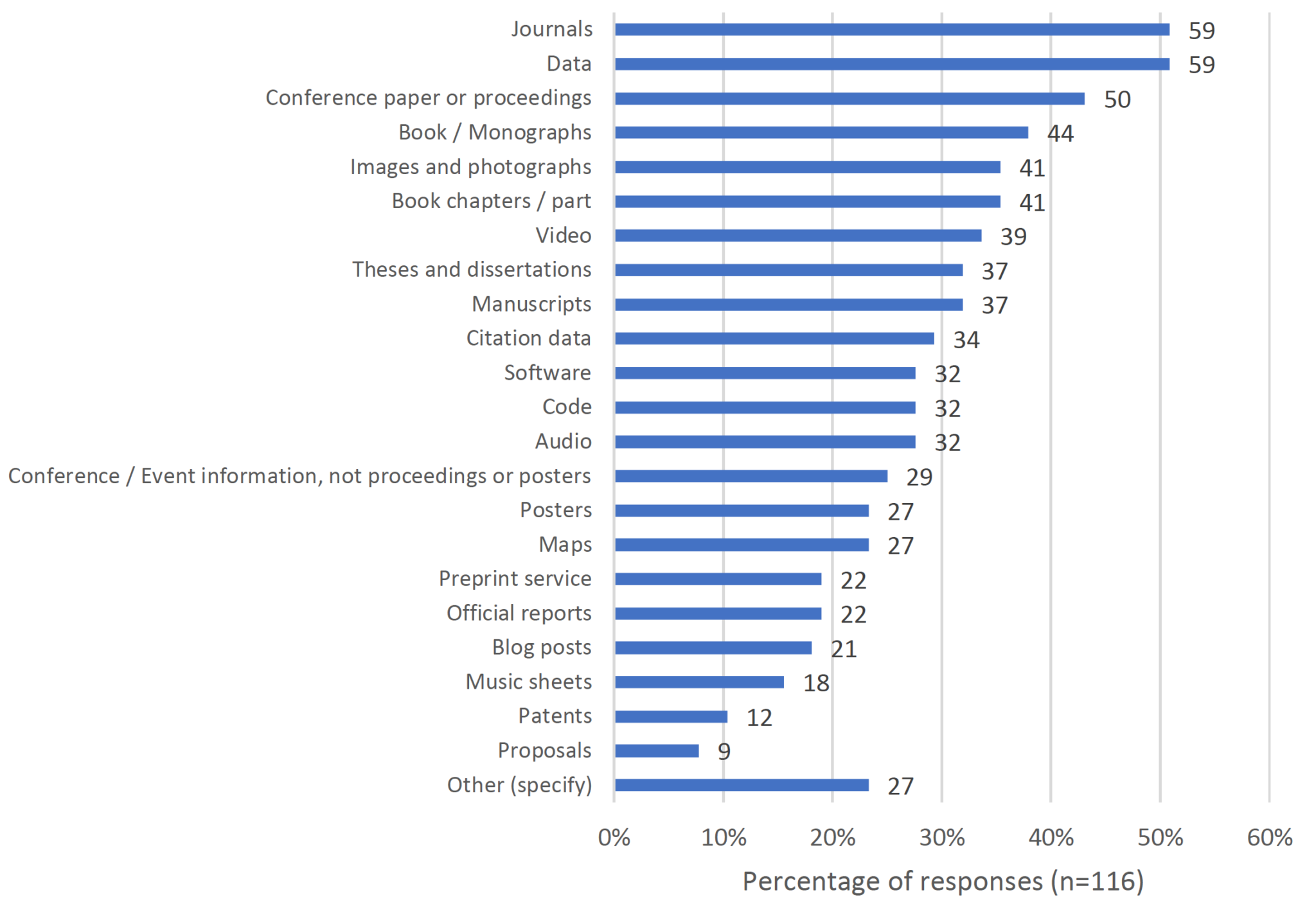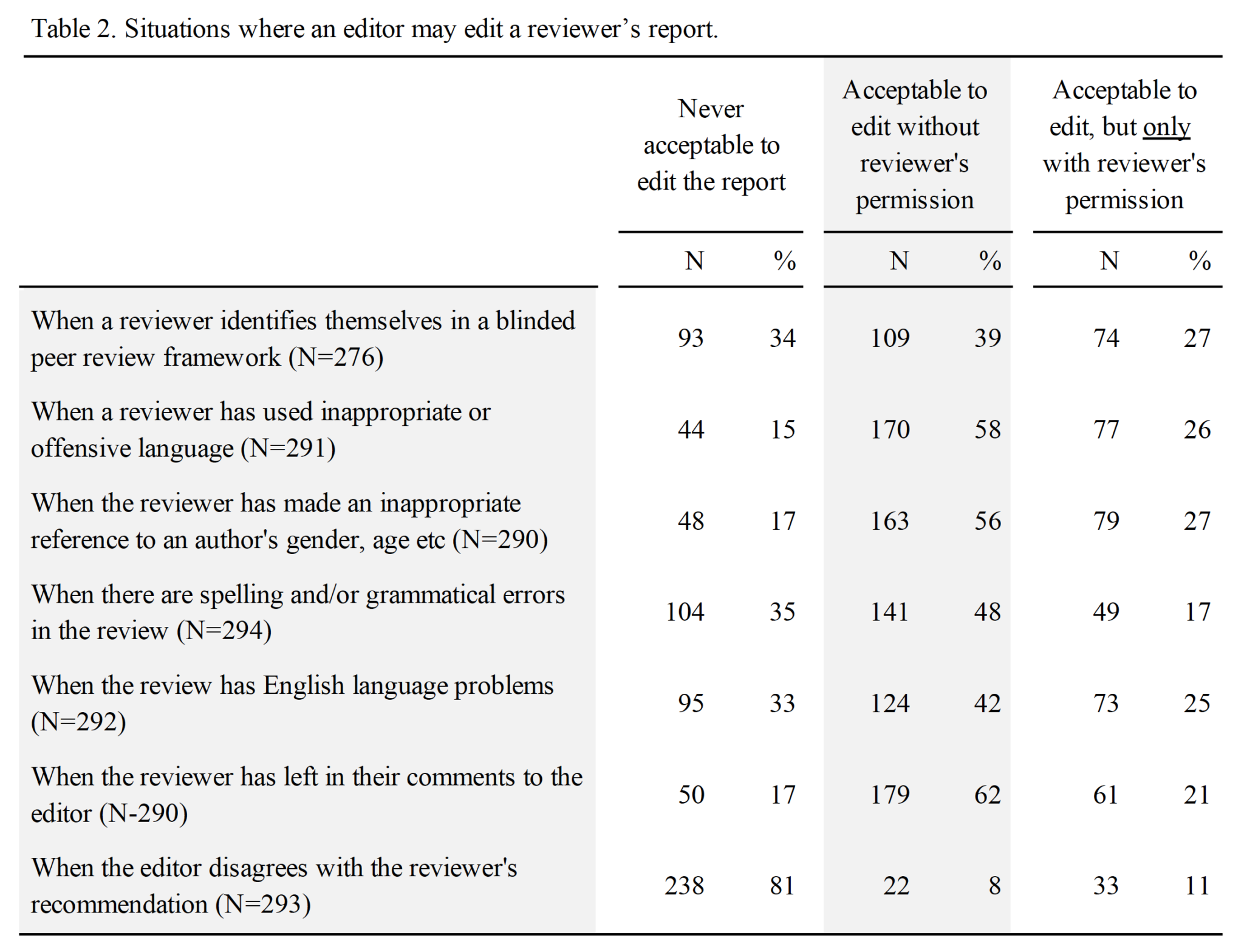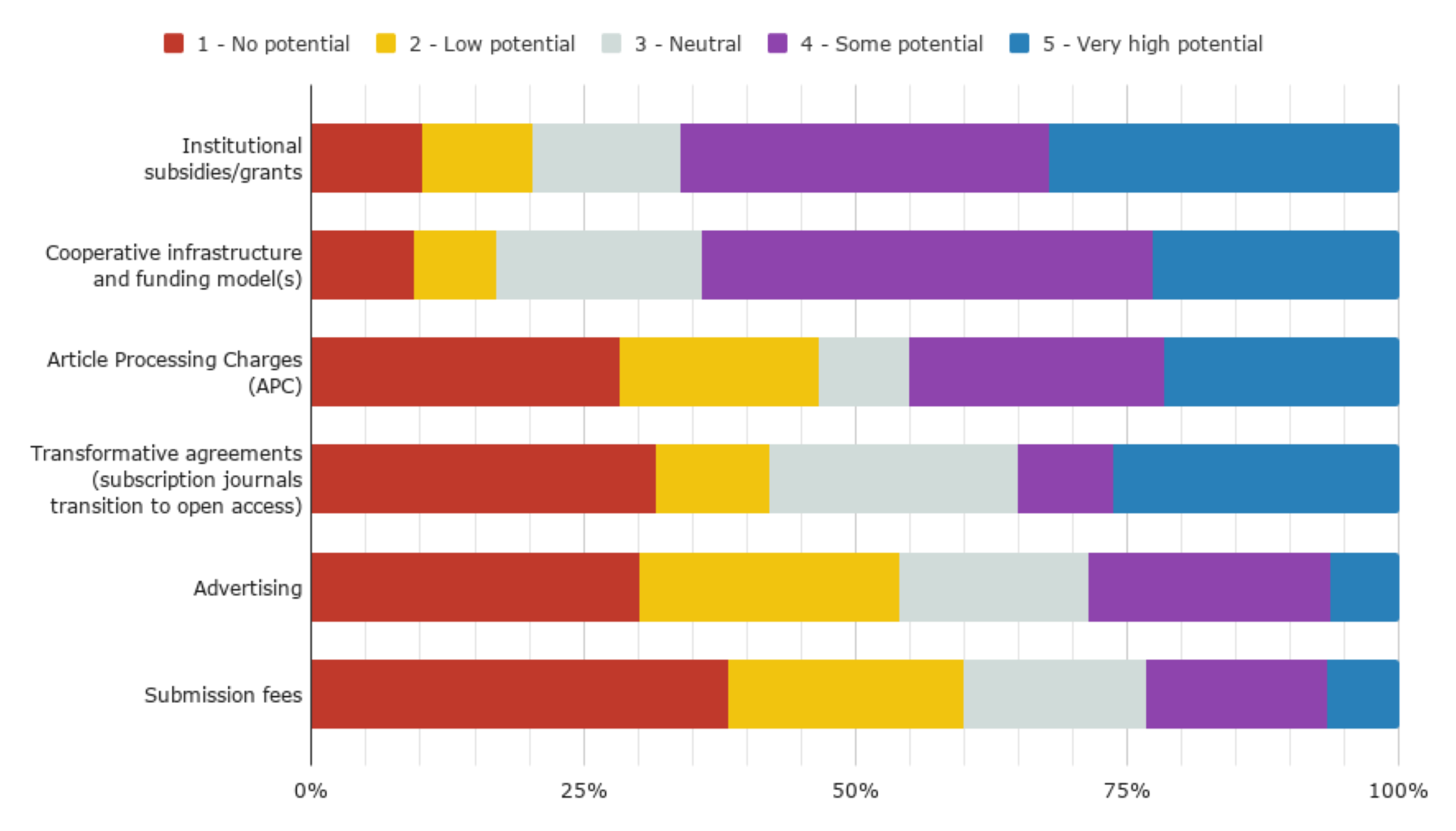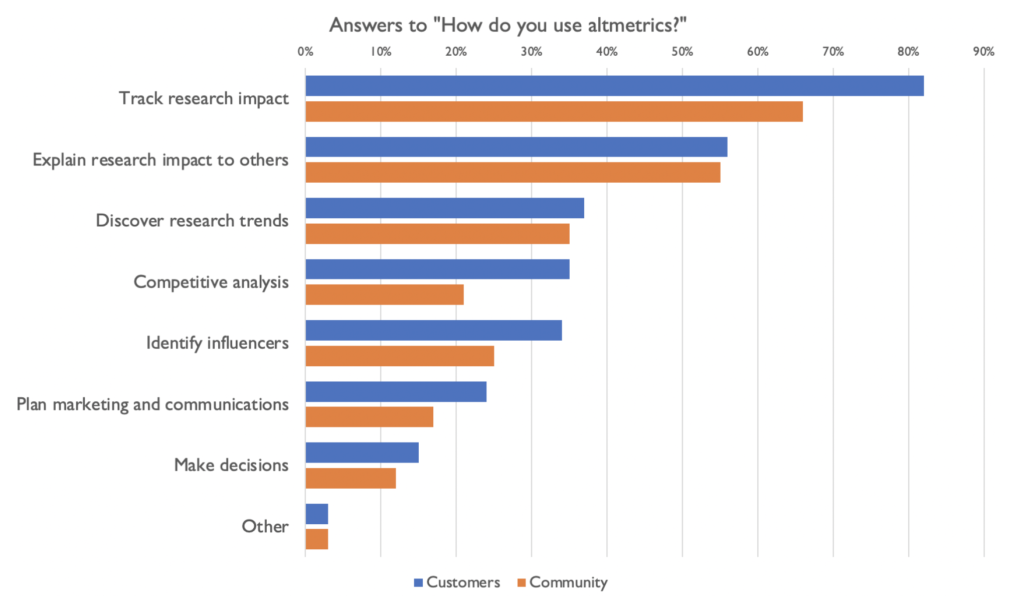Research Quality of Registered Reports Compared to the Traditional Publishing Model. This preprint explores the question whether the Registered Reports (RR) format improves the robustness of research. Although RR have been increasingly popular, good data is hard to come by. The delay between the journal assessment of the study protocol and the final report means that numbers of completed RR remain low. This study looks at 29 published RR and 57 non-RR comparisons. It finds that RR outperformed the non-RR group. This is very promising, of course. There are still uncertainties in the data. For example, early uptakers may have a better quality level than the average body of comparable literature. We will have to wait and see how this plays out. This though looks good.
Giving back: Announcing the JROST Rapid Response Fund. The Invest in Open Infrastructure is awarding grants to “practitioners and organizations that develop and operate open technologies and services to further research and scholarship.” Thank you!
The Chan Zuckerberg Initiative has announced the award of 17 new grants for Open Source Software and Organizations Advancing Open Science. In total, CZI has committed $11.8M to all present and past activities under that program.
Promoting scientific integrity through open science in health psychology: results of the Synergy Expert Meeting of the European health psychology society. The recommendations put forward in this paper look strong and hopefully will see broad adoption.
PUBLISHING
Research Consulting have released data on the gold and diamond open access journals landscape. The interactive dashboard embedded in the blog post is worth looking at (with a reasonably powered computer).
China’s New STM Policies: By the Numbers. DeltaThink’s analysis of STM publishing in China. A conclusion is that over 80% of Chinese universities do not have access to paywalled content. Yet, subscription publishing remains popular in China. Only about 20% of the country’s scholarly output is published gold or hybrid open access. Still some way to go here.
cOAlition S has also released a journal checker tool that helps researchers navigate questions around journal compliance with Plan S.
RESEARCH
Sadly, the iconic Arecibo Observatory in Puerto Rico is damaged beyond repair and will be decommissioned. In recent weeks two support cables failed, damaging the 305 m radio dish. Other cables may fail, too, and repair is not safe to perform. The above news from the National Science Foundation has been covered widely in the press, for example in the New York Times.
OTHER
Automated image recognition: How using ‘free’ photos on the internet can lead to lawsuits and fines. A photographer is allegedly utilizing the older CC-BY 2.0 license conditions under which his photos are released to seek fines for attribution violations or other shortcomings. As reported in this article, it appears he does that without providing those impacted with an opportunity to fix their errors, which is within his legal rights.
This post was corrected on 11/23 to clarify that 80% of Chinese researchers do not have access to the subscription literature.
]]>How open science can advance African psychology: Lessons from the inside. A recommended read of how African researchers can engage with open science, and how North American and European researchers can support them.
CRediT secures philanthropic funding. The project is receiving funding from the Alfred P. Sloan Foundation and Wellcome. It is fantastic to see CRediT advance and working on a broader adoption. A nuanced contributor taxonomy for authors is so important.
The future of arXiv and knowledge discovery in open science. This conference paper by Steinn Sigurdsson, Scientific Director at arXiv, provides a brief overview where arXiv stands, including some projects at arXiv Labs.
SPARC report: Scoping the Open Science Infrastructure Landscape in Europe. An overview of the state of open science infrastructure activities in Europe. This includes a survey of the type of data stored (see figure below).
Ouvrir la science! 22 projects selected by French National Fund for Open Science. A pdf with the list is here.
PUBLISHING
The typical member of Crossref has changed considerably over the past decade. This is at least seems the message from a brief tweet coming from Crossref. It shows how increasingly smaller members contribute to Crossref in addition to the major publishers, and they are using platforms such as OJS to operate their journals. This looks like an interesting trend towards more diversity.
Partner with PeerJ to build a new ecosystem for society publishing. PeerJ is launching PeerJx, which allows smaller societies or institutions to launch their own publication models. Along the lines of the item above, this move appears to open up the PeerJ publishing platform for smaller operators to use.
RESEARCH
Computer Scientists Achieve ‘Crown Jewel’ of Cryptography. Existing cryptography relies on algorithms where we know how they operate, for example by multiplying two very large prime numbers that are kept secret. That knowledge also makes it easier to break the mechanism, because we know how the encryption is done. This can be done even by brute force, for example using quantum computing to determine these secret prime numbers. This new approach development it possible to obfuscate the exact mechanism used for the encryption process, thereby providing fewer attack vectors for decryption.
EVENTS
SSP is inviting proposals for its 43rd Annual Meeting. The meeting will be in May 2021.
OTHER
Jennifer Gibson, Head of Open Research Communication for eLife, is the new chair of OASPA. Congratulations!

Types of content provided by the European Open Science Infrastructure.
Credit (CC-BY): Ficarra, Victoria, Fosci, Mattia, Chiarelli, Andrea, Kramer, Bianca, & Proudman, Vanessa. (2020, October 30). Scoping the Open Science Infrastructure Landscape in Europe. Zenodo. https://doi.org/10.5281/zenodo.4159838
Redesign open science for Asia, Africa and Latin America. This Comment in Nature addresses the challenges of implementing open science principles when facing a number of structural barriers, such as a lack of resources or insufficient education.
Elsevier are retiring a number of features of Mendeley. The retired features appears to be social networking components, such as profiles, public groups or feeds. Mendeley will concentrate on its core activity of reference and research data management for its users.
Clarivate are revamping Web of Science. The updates include not only a redesign, but also a new preprint index. The latter seems notable, as it brings journal articles and preprints even further together by indexing them on the same platform.
OASPA has created an independent foundation for the OA Switchboard. Yvonne Campfens is its Executive Director. The OA Switchboard aims to be an intermediary between institutions, funders, publishers and others for publication-level information, such as publishing fees.
PUBLISHING
Scientists, Publishers Debate Paychecks for Peer Reviewers. Should reviewers be compensate for their work? How would that look like, and who would pick up the tab in the end? This article in The Scientist revisits the topic.
Wiley’s International Journal of Quantum Chemistry has introduced an interactive figure display technology, featuring interactive 3D images. The technology has been developed by their subsidiary Atypon.
DOAJ to lead a collaboration to improve the preservation of open access journals. Concerns had been raised about some online open access journals disappearing without a trace, and this initiative aims to address some of that.
RESEARCH
The Impact of COVID-19 on the research enterprise. Springer Nature have commissioned research into the impacts of the pandemic. There is a lot to unpack here, and covering various aspects of academia. With respect to open science, one of the reports states: “Open science is expected to move up the agenda in the coming months.” Quite. Preprints, open access, data sharing and more are all increasingly on the agenda. Though some have struggled with this. Simon Bains, Head of Library Services, University of Aberdeen, UK, mentions: “The pandemic might provide a possibility for more stimulus for Open Research, but developments have been slowed down because we have not got the time to think about it.”
EVENTS
Clarivate are organizing a webinar to share their Web of Science vision for 2021. November 18, 10 am EST.
The registration is now open for the Open Science Festival. The event will take place online on February 11, 2021, from 1 – 5.30 pm CET.
]]>NIH Policy for Data Management and Sharing. The final NIH policy draft has now been published. The policy does not mandate data sharing, but does require a data management and sharing plan. Well, at least this will be helpful when submitting the results of such research to journals that do require data sharing.
Closed countries, open data. An overview in Research Information that explores whether the pandemic has brought an increase in data sharing. The conclusion appears that there has been a lot of activity in repositories (in parallel to publishers seeing more submissions), but it may be too early to tell if there will be a long-term net effect.
CHORUS and DataCite sign agreement to advance linking and discoverability. The agreement will improve the metadata used by CHORUS and incorporates DataCite doi in CHORUS reports.
PUBLISHING
Delete offensive language? Change recommendations? Some editors say it’s OK to alter peer reviews. This Science news report, based on a recent preprint, demonstrates an astonishingly lax attitude of some journal editors towards editing reviewer reports without reviewer’s permission. In the more problematic cases — reviewer reports that contain offensive or inappropriate language — I’d argue that the concern of the editor rather ought to be whether to consider such a report at all. Editing inappropriate reports without permission and presumably without feeding back to the reviewer to me points to problematic attitudes. (see table below)
Scientific Journals Commit to Diversity, but Lack the Data. The New York Times has explored the clear lack of diversity in academic publishing. Accurate numbers can be hard to come by, but the problem is clear, and publishers (including PLOS) are committed to reporting on that lack of diversity and to improve diversity of staff and contributors.
RESEARCH
Scholarly Societies in the Age of COVID. Laura Brown and Roger C. Schonfeld explore how scientific societies are coping with the repercussions of the pandemic. There are financial concerns as for example revenue from conferences has been impacted. Other concerns are around membership numbers or publishing activities.
On the road less traveled: A Black physicist’s journey in academia. Brooke Russell provides a personal report on her sometimes difficult journey in academia to a PhD in physics. She is the first Black woman to receive a doctorate in physics from Yale University. Her essay appears in Physics Today.
EVENTS
ASAPbio Community Call November 2020. The meeting covers preprint journal clubs, such as the PREreview journal clubs. November 5, 5 pm London local time.
Bringing equal opportunity to highly selective publishing: PLOS and libraries partnering on collective action. An opportunity to learn more about PLOS’ new publishing model. November 10, 11:30 am US Eastern Time.

Situations in which journal editors may edit a reviewer report.
Credit (CC-BY): Hamilton, Daniel G., Hannah Fraser, Rink Hoekstra, and Fiona Fidler. 2020. “Journal Policies and Editors’ Opinions on Peer Review.” MetaArXiv. August 6. doi:10.31222/osf.io/qkjy4.
On Reassembling Scholarly Communications: A book about the ethics and egalitarianism of open access, edited by Martin Paul Eve. In a nutshell, Eve says, “This book is about the ethics of academic publishing and its transition to open access.”
The Open Science Community Starter Kit. How to set up and foster a local Open Science Community, based on models from Europe.
PUBLISHING
Nature journals announce first open-access agreement. The Max Planck Digital Library in Germany has negotiated a deal with its researchers that allows them to publish open access in the Nature branded titles. The deal is notable as it establishes a first open access price point for these journals, with a €9,500 publishing fee per open access article.
Open Access is here to stay. But who will pay? Presenting data from a Scholastica report, Daniella Padula provides some answers on the LSE Blog. The report itself covers journal production as well as access, and has a lot of data to offer. Not all of it pretty. Whilst 98% of publishers create pdf output of papers, fewer than half produce full-text xml files. Machine-readable metadata is patchy, too. Around open access, funding options appear to be gravitating away from APC and transformative agreements towards institutional models or cooperative agreements. (see figure below)
cOAlition S has published a Request for Information for a Price and Service Transparency Framework. This will be a secure service through which publishers and approved users can share pricing data in relation to publishing fees.
The Institution of Engineering and Technology (IET) will transition their entire journal program to gold open access from January 2021. Great to see this development in the engineering domain. The IET has partnered established a new partnership with Wiley to published the journals open access.
PLOS
PLOS and Transparency (including Plan S Price & Service Transparency Framework). PLOS has provided a pricing breakdown for all journals. It is an important step towards a better understanding of the publication costs.
OTHER
Tom Lehrer has waived all rights to the lyrics and his original sheet music. This includes the song “The Elements.”

On a scale of 1-5, what do you think the potential is for each of the options below to fund fully-OA journals at your organization within the next 3 years?
Credit (CC-BY): The State of Journal Production and Access 2020. Report on survey of society and university publishers. Scholastica.
UNESCO has released its preliminary report on the first draft of the Recommendation on Open Science. Among the draft recommendations, this appears to be a good summary: “Ensuring that public research funders require Open Science practices and that all scientific outputs from publicly funded research are as open as possible, and only as closed as necessary.” Another important theme in the document, in my opinion, is the global, equitable access to research infrastructure and facilities.
The next generation discovery citation indexes — a review of the landscape in 2020. First in a series of comprehensive posts by Aaron Tay on citation indices, here taking a closer look at Google Scholar.
Creative Commons in Court. An overview by Melody Herr in Scholarly Kitchen. She summarizes the US lawsuits that were filed around Creative Commons licenses. For example, hyperlinking content to the original source was deemed sufficient in one case to satisfy the requirements of CC-BY. Likewise, a commercial company producing materials for a non-profit was considered not to violate a non-commercial (NC) license.
AfricArXiv in a nutshell – what we do, our achievements and our roadmap. AfricaArXiv is run by a group of volunteers, and there is the option to support their work with donations.
PUBLISHING
Open Access: challenges and opportunities for Low- and Middle-Income Countries and the potential impact of UK policy. The UK Foreign Office has conducted global interviews around the perception of open access publishing. The report is very interesting, and covers a broad range of items, from open access models, misperceptions, open research, and regional/national publishing infrastructures.
The Academy of Finland has adopted an open access policy. Effective January 2021 all funded projects must make their papers available open access in line with the requirements of Plan S.
PLOS
Implementing name changes for published transgender authors. I am proud that we are now able to better support our published transgender authors if they like to update their name on published papers.
EVENTS
Workshop on Open-Source Tools for Chemistry. The workshop is organized by the Royal Society of Chemistry and is taking place online from 9 – 13 November, 2020.
OTHER
A number of job opportunities. Altmetric are looking for a CTO, PLOS is recruiting for a Chief Operations Officer, Digital, and I’m looking for an Executive Editor, PLOS Medicine.
Call for Nominations: Dryad Scientific Advisory Committee. This new committee will provide input into strategies and initiatives at Dryad.
FORCE11 are looking for nominations to their Board of Directors. An opportunity for anyone interested in changing scholarly communications.

Open Access Week is this week, from October 19 – 25, 2020. See the many events that are planned on the event’s homepage.
]]>Three lessons COVID-19 has taught us about Open Access publishing. Robert Kiley argues that preprints are here to stay and that subscription journals making COVID research publicly available is a tacit acknowledgement that paywalls create access barriers.
Google Scholar, Microsoft Academic, Scopus, Dimensions, Web of Science, and OpenCitations’ COCI: a multidisciplinary comparison of coverage via citations. This paper in Scientometrics looks at the citation coverage by providers, with Google Scholar leading the pack. With citations being such an integral part of the scholarly research system, the patchy citation coverage is problematic. That’s why initiatives such as I4OC are so important.
arXiv adds links to machine learning code. The links will be visible in a separate tab on the preprint page. They are facilitated through a partnership with Papers with Code.
The state of altmetrics: a tenth anniversary celebration. Altmetric’s overview of the past decade of alternative paper metrics. (see also the figure below)
PUBLISHING
Article processing charges are stalling the progress of African researchers: a call for urgent reforms. In their editorial for BMJ Global Health, three African researchers highlights the problems for researchers in countries not covered by the Hinari waivers. In some of these countries the gross national product per capita can be as little as $1,500.
RESEARCH
Diversity Work, Interrupted. In response to federal threats of research funding being pulled, some universities have cancelled diversity, equity and inclusion programs, according to Inside Higher Ed.
Amid pandemic, U.S. faculty job openings plummet. Compared to the 2019/2020 academic cycle, faculty openings at the Science Careers job board are down by 70%. The Chronicle of Higher Education has similar data.
How we formed a ‘journal club’ for equity in science. The researchers call their model part discussion group, part support group.
PLOS
Community Action Publishing at PLOS. Implemented for PLOS Medicine and PLOS Biology, this institutional member model goes beyond article charges and makes open access more equitable and distributes costs across representative institutions.
EVENTS
Next week is open access week. The Australasian Open Access Strategy Group (AOASG) is organizing the event Indigenous voices, indigenous research and open access on 19 October, 2020. “The panel will discuss the extent to which the system of reward in academia goes against the values of indigenous cultures and in what ways it (further) marginalises indigenous voices, indigenous ideas and knowledge.”
PIDapalooza, the festival of persistent identifiers, is taking place online on 27 January, 2021. The sessions and party will take place over a period of 24 hours.
OTHER
Prachee Avasthi is the new President of ASAPbio. Congratulations to her and the other new officers!

Survey data on the use of altmetrics.
Credit (CC-BY): Engineering, Altmetric; Konkiel, Stacy; Priem, Jason; Adie, Euan; Derrick, Gemma; Didegah, Fereshteh; et al. (2020): The state of altmetrics: a tenth anniversary celebration. Altmetric. Online resource. https://doi.org/10.6084/m9.figshare.13010000.v2
Shared Investment in OSF Sustainability. A blog post from the Center for Open Science, detailing their growth and related increase in costs for online storage. Going forward, users will have storage limitations, but there is the possibility to connect external data storage facilities into OSF projects.
OAPEN has released the Open Access Books Toolkit. It provides authors with guidance of open access book publishing.
Introducing Hypergraph (Beta). A tool that helps documenting and sharing research step-by-step as it happens.
Inclusive Systematic Review Registration Form. A collaborative effort to develop a generic registration form for systematic reviews.
Aries Systems to Offer New Repository API for Flexible Vendor Integrations. The move will enable a smoother integration of repositories with the Editorial Manager submission platform. Dryad, Figshare, Cadmore Media and Mendeley Data are in talks to utilize this feature.
ImpactViz – An OJS plugin for open scientometric information. The app aims to determine the impact of research in a range of categories.
PUBLISHING
India pushes bold ‘one nation, one subscription’ journal-access plan. The country is aiming to have nation-wide deals with subscription publishers. There is no plan to have specific open access deals, and green open access via repositories appears to be their favored solution. It thus looks as if the deal may not improve the accessibility of research coming out of the country.
The Howard Hughes Medical Institute joins cOAlition S. The HHMI open access publishing policy starts on January 1, 2022. Likewise, the Templeton World Charity Foundation also joins cOAlition S.
Open Journals has been launched in the Netherlands and Flanders. It is a free-to-publish platform for open access journals in the social sciences and the humanities.
RESEARCH
The FBI has warned that foreign actors are likely to use online journals to spread disinformation regarding the 2020 US elections. It is not new that pseudoscience gets published in predatory journals, or that detractors amplify unsupported research findings to support their own agendas. However, this here is a potential scheme to utilize bogus scientific studies to undermine the trust and integrity of an election.
Redefining the scientific conference to be more inclusive. Eleanor S Armstrong, Divya M Persaud and Christopher A-L Jackson propose a number of steps to improve the inclusion of underrepresented groups in virtual conferences. Published in Physics World.
Building the Mathematical Library of the Future. Mathematicians are training a software tool with their knowledge to use it as an assistant to develop mathematical proofs.
OTHER
Timothy Ray Brown, the ‘Berlin Patient’, has passed away from leukemia. He was the first patient cured of HIV.
Library of Congress Launches New Tool to Search Historical Newspaper Images.
]]>Some of the notable items from this past Peer Review Week:
- The Initiative for Open Abstracts (I4OA) has launched with the aim to “promote the unrestricted availability of the abstracts of the world’s scholarly publications, particularly journal articles and book chapters.” It follows on from the earlier Initiative for Open Citations (I4OC), and hopefully it will be as popular.
- Transparent Peer Review: What We’ve Learned. Wiley’s Elizabeth Matson and Elizabeth Moylan review their collaboration with Publons and ScholarOne. Wiley operates an opt-out scheme for authors, and found that 86% of authors remained opted-in. The preprint has further data on the implementation.
- What do Chinese researchers think about the peer review process? Elsevier were asking 1,100 researchers. It covers item such as transparent peer review (~50% of researchers appear to be supportive in one way or another), and reviewer recognition.
- Delta Think have released data around “Preprints and COVID-19”, which also explored the issue of trust in preprints. For most respondents the trustworthiness remained the same in light of the pandemic, or increased, but for around a quarter of respondents it did decrease.
- Strengthening trust in peer review through transparency. Sowmya Swaminathan and Maria Hodges describe efforts at Springer Nature. Of note seems that the uptake of transparent peer review at Nature Communications has increased from an initial 60% to now 70% author uptake.
- Transparency and Trust. PLOS’ contribution by Veronique Kiermer commenting on our efforts around trust in peer review.
- Cell Press are launching their model of community peer review, where submissions are assessed with all their journals in mind, so that sequential peer review at different journals is avoided. This appears similar to the cross-publisher Review Commons, albeit locking authors into the offering of one publisher.
- Transparent Peer Review—A Practical Solution to Implement Open Peer Review at Scale: A Case Study. This was published already on 1 September. The article summarizes the experience of a transparent peer review trial at the Institute of Physics Publishing, working with Publons. It is noteworthy also as it suggests a roll-out to all of IOPP’s fully open access journals in the near future.
- Apologies to the many other noteworthy contributions that I undoubtedly missed.
How the Internet Archive is Ensuring Permanent Access to Open Access Journal Articles. Not all open access journals are participating in archive schemes like LOCKSS or CLOCKSS, and a study by Laakso et al. has found that a number of journals have vanished without trace. The Internet Archive is trying to contribute, and has created an editable catalog to identify the relevant literature for archiving.
JATS4R has a consultation on new items for peer review materials in the XML for published papers. Deadline for posting comments is 30 October.
RESEARCH
The US National Academy of Sciences can now kick out harassers. So why hasn’t it? According to this Nature News item, it appears as if there is a reluctance for formal complaints being filed about harassers. Those complaints are essential to the formal workflow that the National Academy has instituted.
The hysteresis of the Antarctic Ice Sheet. This Nature paper is presenting sobering news of sea level rises as the climate changes, based on the melting of the Antarctic Ice Sheet. For temperature changes up to 2 degrees Celsius above pre-industrial levels, the forecasted rise in sea level is 1.3 meters per each degree of warming, and considerably more than that for further degrees of warming. Even if temperatures were to drop again the process won’t reverse easily.
EVENTS
The public launch event of the Initiative for Open Abstracts (I4OA) is taking place online on 5 October, 2020, at 10am – 11.30am ET.
The program for the Creative Commons global summit on 19 – 23 October has been released.
Open Data Day 2021 will take place on 6 March, 2021. Facilitated by the Open Knowledge Foundation, this brings together groups from all over the world.
OTHER
Perhaps just for fans like me, but Studio Ghibli has released a library of 400 stills from their movies, free to use. The license terms, according to Google Translate, unfortunately appear to be fairly vague: “Feel free to use it within the bounds of common sense.” Here is an example from Spirited Away:

Open science, communal culture, and women’s participation in the movement to improve science. A network analysis of 2,926 scientific articles on open science and on reproducibility/replicability. The study claims that there is little overlap in the literature between these movements, and that the open science movement appears more connected within itself. It also shows that gender representation is still dominated by men, although women have a stronger relative representation in open science studies than in studies on reproducibility. Published in PNAS.
The Bill & Melinda Gates Foundation open access policy is changing to align with Plan S principles. The foundation is a member of cOAlition S.
Implementing Open Science policies into library processes – case study of the University of Eastern Finland library. A cross-section of datasets from the university shows that funder requirements and support from within research groups are key motivators to open up research. Published in LIBER Quarterly.
Open science has to go beyond open source. Daniel Huppmann explains how appropriate documentation and general accessibility of source code is crucial to the reusability of more complex code.
The Varying Openness of Digital Open Science Tools. “Our findings indicate that design decisions and restrictions are biased towards researchers in North American and European scholarly communities.” Preprint by Louise Bezuidenhout and Johanna Havemann on Zenodo.
PUBLISHING
Open access publishing needs to be as inclusive as it wants to be. Three recommendations to support OA in the Global South from Research4Life. These include APC waivers, training of researchers to participate in international publishing, and international cooperation between researchers.
Disadvantages in preparing and publishing scientific papers caused by the dominance of the English language in science: The case of Colombian researchers in biological sciences. This study highlights the obstacles faced by researchers where English is not their first language and cost of translation/editing services is prohibitive. The article is also available in Spanish as Supplementary Information. (COI note: this article is published in PLOS ONE)
Science Journals Are Purging Racist, Sexist Work. Finally. Adam Marcus and Ivan Oransky in Wired.
EVENTS
It is Peer Review Week this week. Look out for the many contributions by various organizations.
OpenAIRE Week is from 12 – 16 October, 2020. For anyone who likes to hear more about the organization.
OTHER
Chris Shillum has been confirmed as ORCID’s Executive Director. Congratulations!
]]>